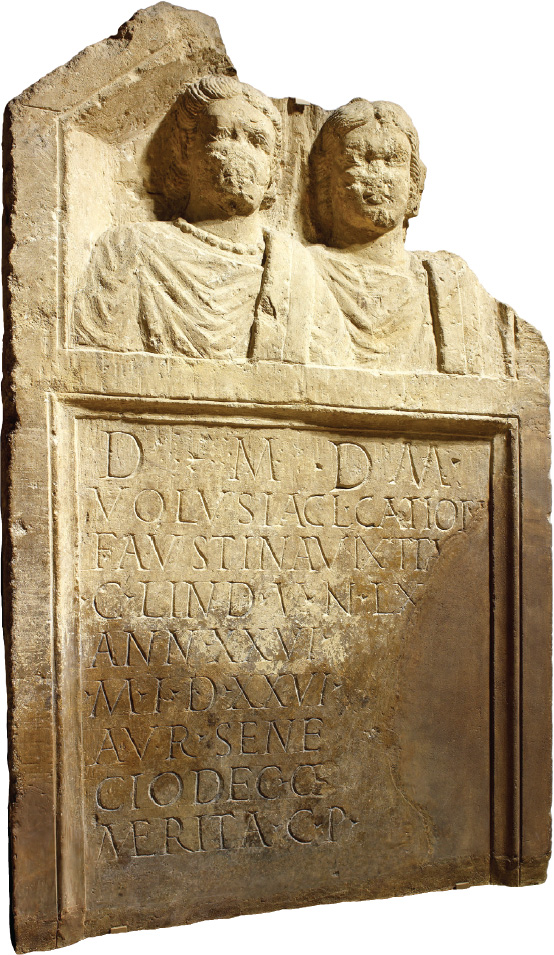A History of Western Society: Printed Page 176
LIVING IN THE PAST
Roman Epitaphs: Death Remembers Life
Romans who could afford them used tombstones and sarcophagi — stone coffins — to commemorate their own lives or those of the deceased and often to share their personal philosophies. They ordinarily expressed themselves seriously in inscriptions that are also intimate in tone. A simple tombstone reads: “To the spirits of the dead. T. Aelius Dionysius the freedman made this while he was alive both for Aelia Callitycena, his most blessed wife with whom he lived for thirty years with never a quarrel, an incomparable woman, and also for Amelius Perseus, his fellow freedman, and for their freedmen and those who come after them.”* Paprius Vitalis paid tribute to his deceased wife: “If there is anything good in the lower regions — I, however, finish a poor life without you — be happy there too, sweetest Thelassia … married to me for forty years.”† A tombstone from Roman Britain (bottom) reads: “Volusia Faustina, a citizen of Lindum, lived 26 years, 1 month, 26 days. Aurelius Senecio, a councillor, set this up to his well-deserving wife. Claudia Catiotua lived 60 years.”


Others enjoyed their prosperity with wry gratitude. His sarcophagus shows Lucius Valerianus calmly looking over his very prosperous estates where the workers most likely included slaves (above). Yet his epitaph states: “I’ve escaped; got clean away. Good-bye Lady Hope and Fortune. I have nothing more to do with you. Work your worst on other people.”‡ Marcus Antonius Encolpus left a similarly blunt message for the living: “Do not pass by this epitaph, wayfarer, but stop, listen, hear, then go. There is no boat in Hades, no ferryman Charon. No caretaker Aecus, no Cerberus dog. All we dead below have become bones and ashes, nothing more. I have spoken the truth to you. Go now, wayfarer, lest even in death I seem garrulous to you.”§ All of these people felt that their lessons in life were valuable enough to share with others.
*Elaine Fantham et al., Women in the Classical World (New York: Oxford University Press, 1994), pp. 369–370.
†Naphtali Lewis and Meyer Reinhold, Roman Civilization, vol. II (New York: Harper Torchbooks, 1951), p. 285. Copyright © 1990 Columbia University Press. Reprinted by permission of Columbia University Press.
‡Mary Johnston, Roman Life (Chicago: Scott, Foresman, and Co., 1957), p. 405.
§Lewis and Reinhold, Roman Civilization, vol. II, pp. 284–285. Copyright © 1990 Columbia University Press. Reprinted by permission of Columbia University Press.
QUESTIONS FOR ANALYSIS
Question
Examine the tombstone and sarcophagus illustrated here. How do the images on them fit with the epitaphs inscribed on them quoted here?
Question
Consider all the epitaphs. What do they tell us about Roman attitudes toward life and death?